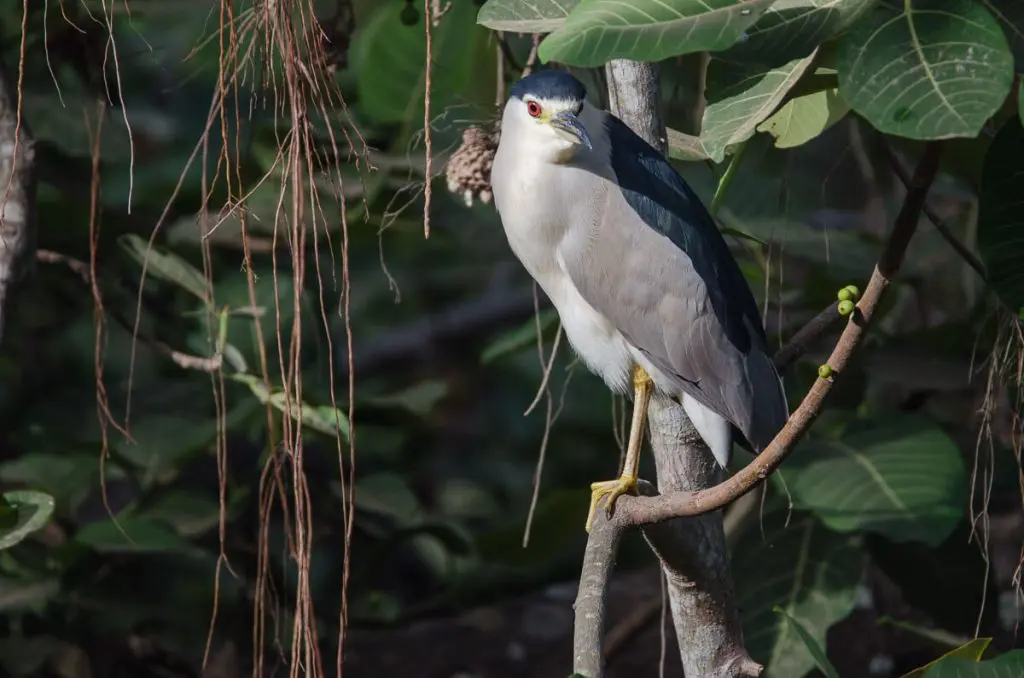The Black-crowned Night-heron can be seen at Footsteps or nearby at the wetlands a short walk away. Found across most of the world including The Uk in Somerset where the first breeding pair with fledgelings were seen in 2017.
As you can see from the pictures below, this bird seems to prefer standing on one leg, all it needs now is an eyepatch!


Where is the Black-crowned Night-heron found?
As mentioned earlier, he is seen at Footsteps and also at the wetlands which are close-by to us just a few minute’s walk away.
This heron is found across most of the world except Australasia.
In Gambia for example it is generally fairly common and found next to the water.
What does it look like?
Adults have a black crown and back with the remainder of the body white or grey, red eyes, and short yellow legs. They have pale grey wings and white underparts. Two or three long white plumes, erected in greeting and courtship displays, extend from the back of the head. The sexes are similar in appearance although the males are slightly larger. Black-crowned night herons do not fit the typical body form of the heron family. They are relatively stocky with shorter bills, legs, and necks than their more familiar cousins, the egrets and “day” herons. Their resting posture is normally somewhat hunched but when hunting they extend their necks and look more like other wading birds.
Immature birds have dull grey-brown plumage on their heads, wings, and backs, with numerous pale spots. Their underparts are paler and streaked with brown. The young birds have orange eyes and duller yellowish-green legs. Source Wikipedia
What does it feed on?
It will eat insects, small fish, crustaceans, frogs, aquatic insects as well as small mammals and even small birds.
Want to know an interesting Factoid or two?
Sometimes they can lay as many as eight eggs in a nest so pretty crowded in there.
Also, they are among just seven heron species that engage in bait fishing. This is to say that they lure or attract fish by throwing buoyant objects into the water within their striking range. This a rare example of birds using tools.
How does it sound?
They can be very noisy birds, especially in their nesting colonies. Their call sounds like a quok or woc.

